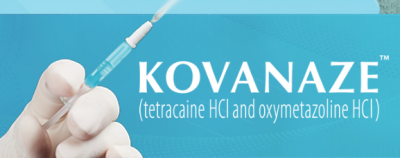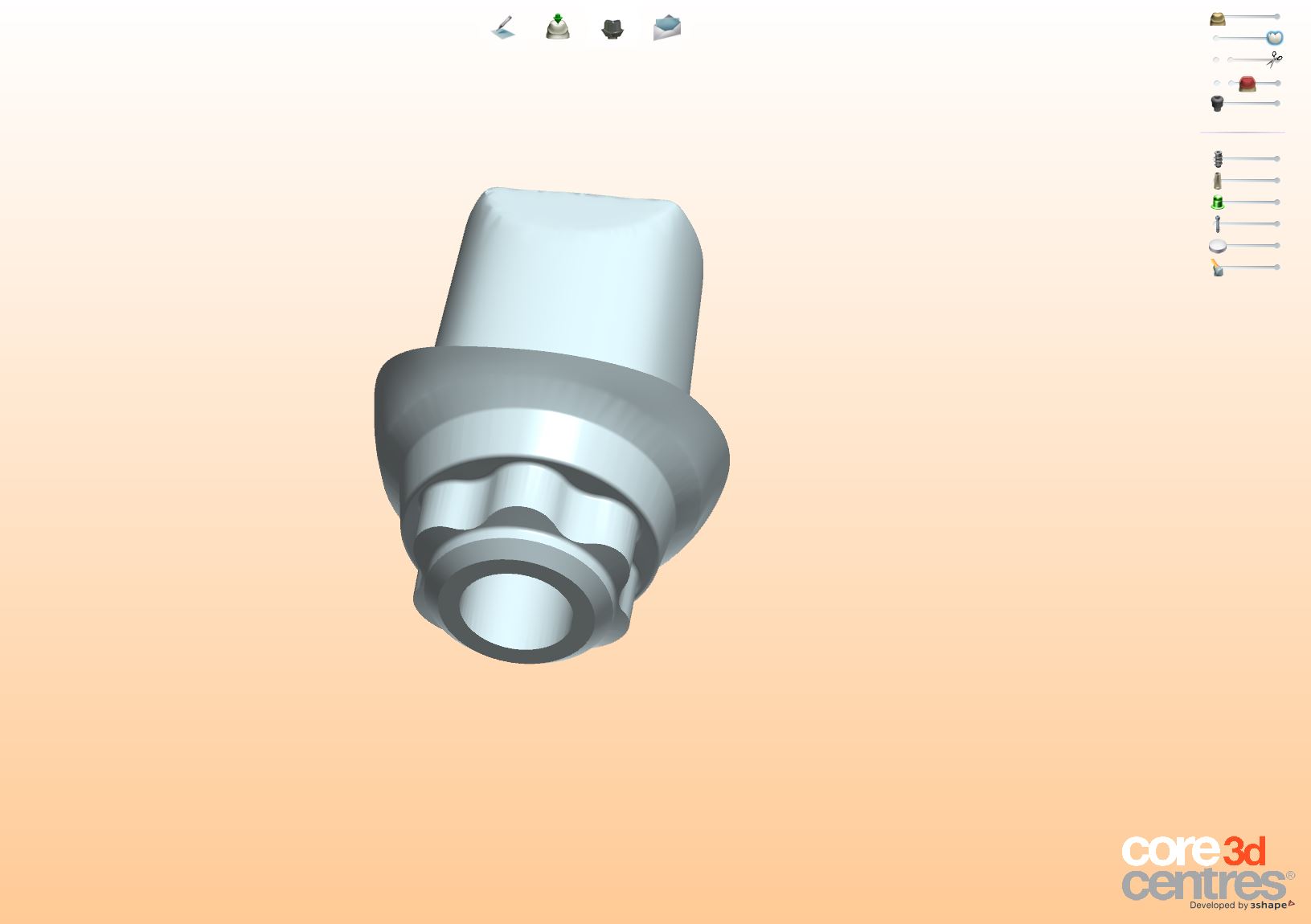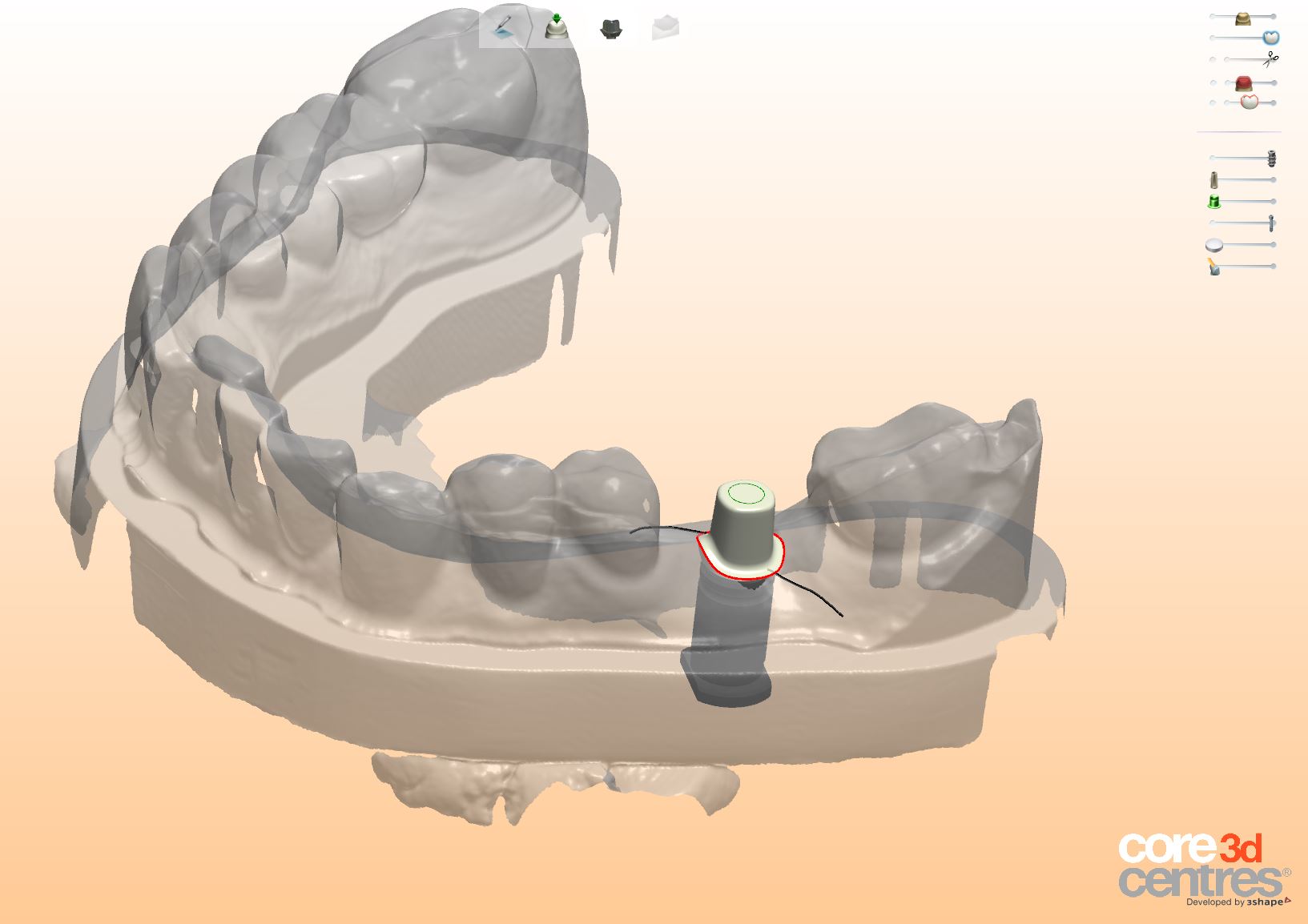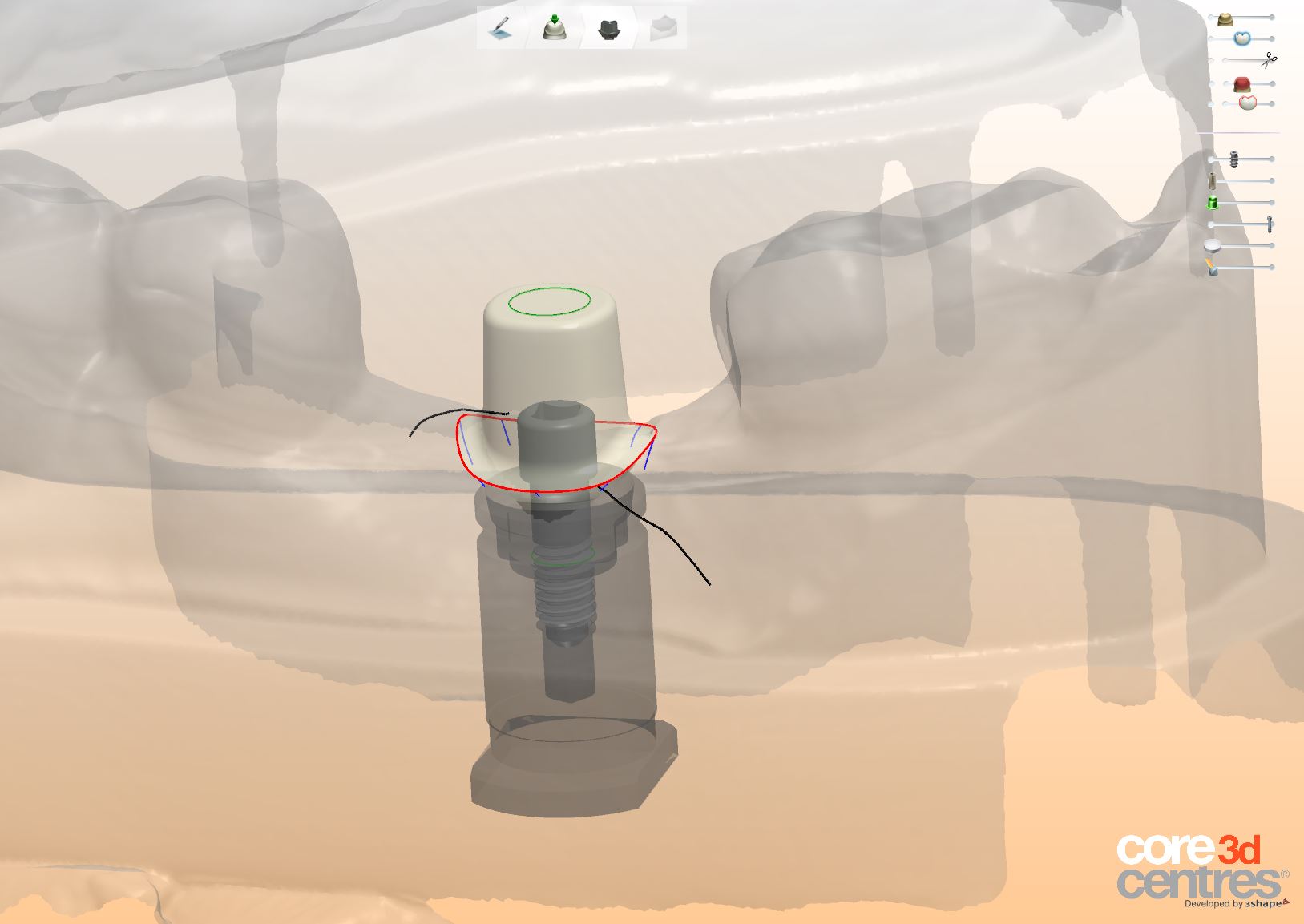Dr. Bob Margeas says," It's a wrap" at the #ADADEN 2016. See what he has to say.
Meet Dr. Bob Margeas, Editor-in-Chief for Inside Dentistry, at the 2016 ADA Meeting
Posted on Monday, October 24, 2016
Dr. Bob Margeas, our Editor-in-Chief, is at the #ADADEN, if you see him be sure to STOP him as he'd love to talk to you about Inside Dentistry.
Dr. Bob Margeas will be at the 2016 ADA to talk to you about Inside Dentistry
Posted on Monday, October 24, 2016
Be sure to look out for Inside Dentistry's Editor-in-Chief, Dr. Bob Margeas, and #STOP him on the 2016 ADA floor! See his message for attendees here!#ADADEN
Kovanaze Nasal Spray, FDA-approved Needle-Free Dental Anesthesia, Launch Announced at ADA Meeting
Posted on Saturday, October 22, 2016
DENVER, Oct. 21, 2016 /PRNewswire/ -- St. Renatus, LLC announced today that Kovanaze™ (tetracaine HCl and oxymetazoline HCl) Nasal Spray, the first FDA-approved, needle-free, regional dental anesthesia for the maxillary arch, is available for pre-order. The Kovanaze product launch coincides with the American Dental Association's annual meeting in Denver, October 20-24.
Approved by the U.S. Food and Drug Administration (FDA) on June 29, 2016, Kovanaze is indicated for regional anesthesia when performing a restorative procedure on teeth 4-13 and A-J in adults and children weighing more than 40 kg.
In Phase 3 clinical trials, use of Kovanaze in the anterior maxillary region during restorative procedures resulted in 96 percent efficacy in teeth 5-12 and 63 percent efficacy in teeth 4 and 13. Additionally, patients may not experience the same sensation of numbness or tingling of the lips and cheeks associated with injectable dental anesthetics.
"It is a significant moment in dentistry as a new delivery method for pain management is now available," said Steve Merrick, St. Renatus, Chief Executive Officer. "For decades, needles have been the mainstay for delivering dental anesthesia; now dentists have the option to offer patients a regional anesthesia via a nasal spray for restorative procedures in the smile zone."
To learn more or to place an order, please visit Kovanaze.com, call the Kovanaze Support Line at 1-800-770-9400, or contact your local dental dealer.
IMPORTANT SAFETY INFORMATION: Use in patients with uncontrolled hypertension or inadequately controlled active thyroid disease of any type is not advised. Tetracaine may cause methemoglobinemia, particularly in conjunction with methemoglobin-inducing agents. Use of KOVANAZE in patients with a history of congenital or idiopathic or methemoglobinemia is not advised. Methemoglobinemia should be considered if central cyanosis unresponsive to oxygen therapy occurs, especially if methemoglobinemia-inducing agents have been used. Confirm diagnosis by measuring methemoglobin level with co-oximetry. Treat clinically significant symptoms of methemoglobinemia with a standard clinical regimen. Allergic or anaphylactic reactions can occur. If an allergic reaction occurs, seek emergency help immediately. KOVANAZE is contraindicated in patients with a history of allergy to tetracaine, benzyl alcohol, other ester local anesthetics, p-aminobenzoic acid (PABA), oxymetazoline, or any other component of the product. Some clinical trial patients experienced an increase in blood pressure so blood pressure should be monitored. In addition, patients should be carefully monitored for dysphagia. KOVANAZE is not recommended for use in patients with a history of frequent nose bleeds. Concomitant use of monamine oxidase inhibitors, nonselective beta adrenergic antagonist, or tricyclic antidepressants may cause hypertension and is not recommended. Discontinue use of oxymetazoline-containing products 24 hours prior to KOVANAZE administration. Avoid concomitant use of intranasal products. The most common adverse reactions to KOVANAZE occurring in >10% of patients include a runny nose, nasal congestion, nasal discomfort, sore throat, and watery eyes.
Convergent Dental Announces New Partnership with Patterson Dental
Posted on Friday, October 21, 2016
Natick, MA (October 20, 2016) –Convergent Dental Inc., developer of Solea®, the industry-leading, computer-aided, CO2 all-tissuedental laser system, is pleased to announce a strategic partnership with Patterson Dental, a leading distributor of dental products, equipment, and technology in the US and Canada. Effective immediately, Patterson Dental will distribute Solea, the first and only CO2 dental laser cleared to cut hard, soft and osseous tissue across the US.
“We are tremendously excited about this partnership,” remarked Michael Cataldo, CEO of Convergent Dental. “Patterson’s representatives have earned a place as trusted advisors to thousands of dentists because of their commitment to a deep understanding of what is important to each customer and delivering the best solutions to meet those needs. This thoughtful approach to helping practices grow matches exactly with how we do business at Convergent Dental and is the most important aspect of this partnership.”
Solea has earned its reputation for delivering reliably anesthesia-free, blood-free, suture-free, and pain-free experiences because of the science behind it, the technology that enables it, and its simplicity in the hands of the dentists. With a single setting, dentists move back and forth between hard, soft, and osseous tissue by just changing pressure on the dental laser industry’s only variable speed foot pedal.
“Solea is revolutionizing the dental practice by dramatically increasing production while greatly improving the patient experience,” remarked Dave Misiak, President of Patterson Dental. “We truly believe in this groundbreaking technology and see it as a powerful complement to the other technologies that we have so successfully introduced to thousands of our customers.”
All dental professionals attending this year’s American Dental Association (ADA) Meeting are encouraged to visit Convergent Dental at booth #1814 and Patterson Dental at booth #3036 for a free demonstration of how Solea can improve their own clinical procedures and practice profitability.
For more information about Solea, please visit www.convergentdental.comor call 844.GOSOLEA.
Study Suggests Benefits of Laser Treatments for Dental Problems
Posted on Friday, October 21, 2016
Researchers have developed computer simulations showing how lasers attack oral bacterial colonies, suggesting that benefits of using lasers in oral debridement include killing bacteria and promoting better dental health.
In a study published in the journal Lasers in Surgery and Medicine, the researchers show the results of simulations depicting various laser wavelengths aimed at virtual bacterial colonies buried in gingival tissue. In humans, actual bacterial colonies can cause gingivitis. Gingivitis can develop into periodontal disease, which involves a more serious infection that breaks down the bones and tissues that support teeth.
"The paper verifies or validates the use of lasers to kill bacteria and contribute to better health following periodontal treatments," said co-author Lou Reinisch, PhD, associate provost for academic affairs at New York Institute of Technology.
Drawing on his background in physics, optics, and calculus, Reinisch, an expert in laser surgery and an associate editor with the journal, created mathematical models based on optical characteristics of gingival tissues and bacteria. He then produced simulations of three different types of lasers commonly used in dentistry and their effects on two types of bacterial colonies of various sizes and depths within the gingival models.
"One of the questions we asked is how deep could the bacteria be and still be affected by the laser light," said Reinisch. The simulations indicate that 810 nm diode lasers, when set to short pulses and moderate energy levels, can kill bacteria buried 3 mm deep in the soft tissue of the gingiva. The 1064 nm Nd:YAG laser is also effective with similar penetration depth. Both lasers spare the healthy tissue with the simulations showing minimal heating of the surrounding tissue. Minimizing the thermal damage leads to faster healing, says Reinisch.
"The findings are important because it opens up the possibility of tweaking the wavelength, power, and pulse duration to be the most effective for killing bacteria," Reinisch says. "The doctors will look at this and say, 'I see there is a possible benefit for my patients in using the laser.'"
"The study reveals what's going on in the tissue, so I hope that we're educating the medical professionals by demonstrating that you can do a good job of killing bacteria with certain lasers," says co-author David Harris, PhD, director of Bio-Medical Consultants, Inc., which specializes in medical laser product development. "When you do this treatment, you remove an infection and allow tissue to regenerate. Getting rid of the infection means the tissue can heal without interference."
The cost of dental lasers can range from $5,000 to over $100,000, according to Reinisch, and healthcare professionals require extra training to use them. These costs are passed on to the patient so Reinisch notes there must be a definite benefit for the patient to justify these costs.
Harris noted that the Academy of Laser Dentistry estimates that at least 25% of US dental offices have dental laser capability for periodontal treatment as outlined in the paper, along with a host of other soft tissue surgical procedures and hard tissue procedures like removal of dental decay.
Harris said the video simulations demonstrate what happens when lasers hit buried bacterial colonies.
"This is a great way to present to the doctor esoteric scientific findings in a clinically meaningful format," he said. "The model is a great tool for making predictions of what can happen in the tissue. Our study confirms its use as a way to determine the most effective laser parameters to use clinically."
In a first for the journal, the published results include video depictions of the computer simulations. The journal readers can actually see the soft tissue of the virtual gums and bacteria heat up and cool down as the simulated laser is scanned over the tissue.
The study's methodology of simulating how laser light interacts with tissue has implications beyond dentistry; physicians and surgeons use lasers in various treatments, including vocal cord procedures and dermatological treatments, including those for toenail fungus.
Guided by the results presented in this study, both Reinisch and Harris expect that clinical trials will be designed to validate the findings.
The study, entitled "Selective Photoantisepsis," is published in the October issue of Lasers in Surgery and Medicine.
Source: https://www.eurekalert.org/pub_releases/2016-10/nyio-ssb102016.php.
Introducing The Future of Oral Health, a Collaboration between Scientific American and Colgate-Palmolive
Posted on Thursday, October 20, 2016
NEW YORK, Oct. 20, 2016 /PRNewswire/ -- The impact of oral disease on whole-body health and the changes to the practice of dentistry worldwide are the subjects of The Future of Oral Heath, a new publication produced by Scientific American Custom Media, in collaboration with Colgate-Palmolive Company.
The issue will launch on October 21 at the American Dental Association's Annual Meeting in Denver during the panel discussion, "The Evolving Landscape of Global Oral Health, Its Prevention and Treatment," moderated by Jeremy Abbate, VP and publisher of Scientific American and the publishing director of The Future of Oral Heath. Panelists include: Michael C. Alfano, DMD, PhD, Caswell A. Evans, DDS, MPH, Sharon Guynup, Thomas E. Van Dyke, DDS, PhD, Dipl. ABP (Periodontology) and Marko Vujicic, PhD. It will be available online for free at www.scientificamerican.com/futureoralhealth.
The publication explores science, policy and new delivery models to better understand the current and future state of the multifaceted oral health field. Within the issue are updates on:
-
The oral health of a growing elderly population; global health issue of caries and periodontal diseases and the latest industry developments helping to improve access and cost-of-care in these areas.
-
The state of the science linking oral health and other areas of medicine and changes in the relationships between the dental and medical communities as they slowly de-silo and integrate to deliver better care and greater access for patients.
-
New tools being employed in diagnostics, biotechnology, and digital health that are advancing care, along with a special look at how dentistry and oral health will be managed in the future.
-
Philosophies and technologies that have fueled industry changes and ways in which global demographics are mandating more accommodating, on-demand approaches to dentistry that reduce cost and bring care to hard-to-reach populations.
"We are thrilled to be working with Colgate to bring these important issues to an international audience," notes Jeremy Abbate, VP and Publisher, Scientific American and the project's leader. "Examining oral health through the lens of global health, access to care, and future technology is a relevant conversation, not just for dentistry, but for the larger allied health space."
Pat Verduin, Colgate's Chief Technology Officer, concurs: "Solutions in oral health must address evolving patient needs, changing global demographics, and the ever-advancing innovation landscape that will affect delivery methods and models of care. We are very proud to be a part of this multifaceted conversation."
Core3dcentres and Keystone Dental Announce Partnership
Posted on Thursday, October 20, 2016
Core3dcentres NA and Keystone Dental Inc. announced they have entered into a partnership under which Core3dcentres NA will manufacture and distribute custom milled components for Keystone Dental’s TiLobe Connection of Prima, Genesis, and MAX-TL Implant Systems.
The partnership will create a streamlined operation, linked together by an Internet portal, which integrates the digitized patient data and facilitates the flow of information from clinician to laboratory to the Core3dcentres milling center. The end goal: enhanced efficiency between the clinician and laboratory, and satisfied patients with individualized esthetic custom abutments on their implants.
Core3dcentres NA is ISO 13485:2012 and continues to undergo a rigorous certification process (including machined samples, material handling and product training) to ensure its milling centers are meeting the high standards and quality levels that Keystone Dental demands.
“The partnership with Core3dcentres will expand our presence in the digital dentistry market and allow Keystone Dental to notably enter the CAD/CAM arena to produce titanium and titanium-base zirconia abutments. We are pleased to partner with Core3dcentres, combining our global presence and renowned quality with their technological expertise and know-how, to provide our clinicians and labs with a state-of-the-art digital solution,” says John De Angelo, Director, Clinical Development, Keystone Dental Inc.
Both say the partnership opens up new opportunities for the dental industry and reinforces their commitment to using the best technologies, materials, and processes available in the market today.
For more information on Keystone Dental custom milled components from Core3dcentres, or any other products, services, and educational offerings, go to core3dcentres.com, call 888-750-9204, or email InfoUSA@core3dcentres-na.com.
Conduct Research at the National Center for Health Statistics
Posted on Thursday, October 20, 2016
Statistical information plays an important role in guiding actions and policies to improve the health of the American people. With this guiding principle, the National Center for Health Statistics (NCHS) and AcademyHealth have collaborated for almost two decades for the NCHS/AcademyHealth Health Policy Fellowship program. Now accepting applications for the 2017 cycle, this fellowship program brings experts in health services research-related disciplines to the NCHS to conduct studies to address important issues in health policy.
The selected fellow will gain full access to NCHS data resources as well as several opportunities for professional development, collaboration, mentoring partnerships, and dissemination. During the 13 month tenure, the selected fellow will work closely with an NCHS staff member who can provide technical expertise related to the fellow's research, assist in accessing NCHS data systems and other resources, and help identify other collaborative opportunities within the Center.
The 2017 Fellow will also:
-Present research at an NCHS seminar
-Learn the fundamentals of health policy development and implementation at AcademyHealth’s Health Policy Orientation
-Attend and present research at AcademyHealth conferences, including the National Health Policy Conference and Annual Research Meeting
Applicants are required to complete the Intent to Apply form online to begin the application process. For more information, visit the AcademyHealth website or email nchs@academyhealth.org.
Apply Now: www.academyhealth.org/nchs
Application Deadline: Monday, November 7 at 5:00 p.m. ET
Claims Related to Oral Cancer Diagnoses Rise 61 Percent since 2007
Posted on Thursday, October 20, 2016
Privately billed insurance claim lines related to oral cancer diagnoses rose 61 percent from 2007 to 2015, according to data from FAIR Health, a national, independent, nonprofit organization dedicated to bringing transparency to healthcare costs and health insurance information. As shown in the infographic below, the greatest increase occurred in throat cancer (malignant neoplasm of the nasopharynx, hypopharynx and oropharynx) and the second greatest in tongue cancer (malignant neoplasm of the tongue).
Oral cancer claims occurred nearly three times as often in males (74 percent) as in females (26 percent) in the period 2011-2015, according to data from FAIR Health’s repository of over 21 billion privately billed medical and dental claims. Tongue and throat cancers in particular were more likely to occur in men than women. However, men and women had similar chances of developing gum cancer (malignant neoplasm of the gums) and an oral tumor that was benign but could become cancerous (neoplasm of uncertain behavior—oral).
In the period 2011 to 2015, oral cancer claims occurred much more frequently in individuals who were age 46 years and older than in younger individuals, according to FAIR Health data. From 2011 to 2015, oral cancer claims increased in the 56-to-65-year-old age group, and decreased in people over 65 years old.
Oral cancer is the eighth most commonly occurring cancer in males and has a high death rate. The American Cancer Society (ACS) estimates that approximately 48,330 Americans will get cancer of the oral cavity or pharynx (throat) in 2016, and that approximately 9,570 people will die of the disease. Tobacco use in any form is a principal risk factor for oral cancer, according to the ACS. Such use includes smoked tobacco in the form of cigarettes, cigars and pipes, and smokeless tobacco in the form of chewing tobacco and snuff. Excessive alcohol use and human papillomavirus (HPV) infection also are risk factors.
The Importance of Early Detection
Patients who are diagnosed with oral cancer at the early, local stage, before the cancer has spread elsewhere in the body, are much more likely to be alive five years later than patients whose cancer has spread, according to the ACS. Because of the importance of early detection, the American Dental Association (ADA) suggests that dentists perform oral cancer screenings during routine dental checkups, particularly in patients who use tobacco or consume alcohol heavily. But, FAIR Health data in the period 2007-2015 show that adult males, despite their higher risk for oral cancer, were much less likely than adult females to seek preventive dental examinations and cleanings.
According to FAIR Health data, two dental procedures associated with oral cancer screenings have been increasingly performed in recent years: CDT codes D0431, an adjunctive pre-diagnostic test, and D7287, exfoliative cytological sample collection (obtaining cells for microscopic study).1 The chart below shows the distribution by age group for those codes in the period 2007-2015.
FAIR Health President Robin Gelburd stated, “Oral cancer is a serious and growing public health problem. We hope that our data help inform the national conversation on this topic.”
1The code on Dental Procedures and Nomenclature is published in Current Dental Terminology (CDT), American Dental Association (ADA). All rights reserved.
Recent Headlines
-
Together toward the future: Ivoclar and 3D printing expert SprintRay launch collaborative partnership
Wednesday, April 24, 2024
-
SprintRay Introduces Revolutionary MIDAS
Tuesday, April 23, 2024
-
Heartland Dental Provides Access to VideaHealth's AI Platform Across National Footprint of Over 1700 Supported Practices
Tuesday, April 23, 2024
-
Introducing PDS Health: The Evolution of Pacific Dental Services into Comprehensive Health Care
Tuesday, April 23, 2024
-
Penn Dental Medicine's Geelsu Hwang Engineering a Next-Generation Dental Implant
Tuesday, April 23, 2024













